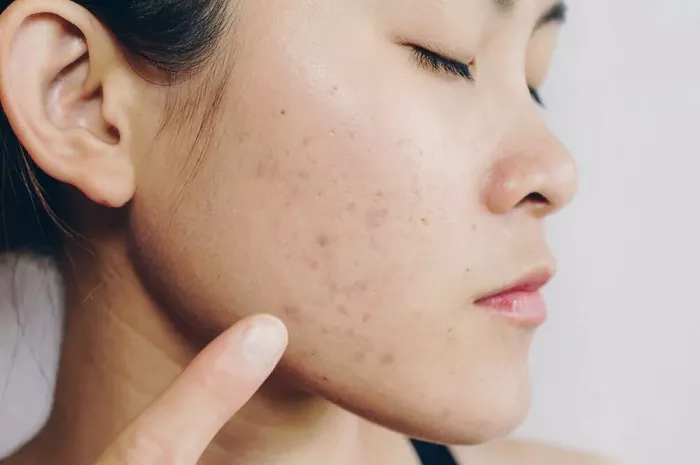In the world of skincare, sunscreen has long been the frontline defense against harmful sun damage. However, traditional sunscreens often leave behind a white cast or feel heavy on the skin, deterring many from using them consistently. This is where tinted sunscreen enters the scene as an innovative product that blends sun protection with cosmetic appeal. But what exactly is tinted sunscreen? How does it work? And why is it becoming a favorite for many skincare enthusiasts and dermatologists? This article will offer a comprehensive look into tinted sunscreens, exploring their unique qualities, benefits, and practical tips for use, all aimed at helping you understand why this product might be an essential addition to your daily routine.
Tinted sunscreen is a formulation that combines broad-spectrum sun protection with a subtle tint or color. Unlike clear sunscreens, which are designed purely to block or absorb ultraviolet (UV) rays, tinted sunscreens add a layer of pigment that evens out skin tone and offers additional protection against visible light. The pigment usually comes from iron oxides, which provide a natural-looking tint that can range from very sheer to more noticeable coverage. This dual function not only safeguards skin from UVA and UVB rays but also protects against high-energy visible (HEV) light—something traditional sunscreens often overlook.
The rise of tinted sunscreen can be attributed to both aesthetic and scientific reasons. Many people avoid regular sunscreen use because of the white residue left by physical blockers like zinc oxide or titanium dioxide, especially on darker skin tones. Tinted sunscreen solves this problem by providing a more flattering finish that blends seamlessly with the natural complexion. Scientifically, the added pigments offer protection against visible light, which can penetrate deeper into the skin and contribute to pigmentation issues such as melasma or post-inflammatory hyperpigmentation. This makes tinted sunscreen particularly useful for individuals prone to discoloration.
How Does Tinted Sunscreen Protect Against More Than Just UV Rays?
The most crucial function of any sunscreen is to shield the skin from UVA and UVB radiation, which are responsible for sunburn, premature aging, and an increased risk of skin cancer. Tinted sunscreens fulfill this role by containing both chemical and physical UV filters. Chemical filters absorb UV radiation and convert it into harmless energy, while physical filters reflect and scatter the rays away from the skin. The tint, provided mainly by iron oxides, adds another dimension of protection by blocking visible light waves.
Visible light, unlike UV rays, is part of the light spectrum we can see with the naked eye, and it can penetrate the skin more deeply than UVB rays. High-energy visible light, or blue light, emitted from the sun and electronic devices, has been linked to oxidative stress and increased pigmentation. This kind of damage is particularly problematic for people with darker skin tones and those who suffer from hyperpigmentation disorders, because visible light can trigger or worsen dark spots and uneven skin tone.
By incorporating pigments that filter visible light, tinted sunscreen provides a fuller spectrum of protection. It reduces the risk of photoaging and pigmentation that clear sunscreens alone cannot prevent. This innovation has drawn praise from dermatologists and skincare experts alike, who recommend tinted sunscreen as part of a comprehensive approach to sun protection and skin health.
What Are the Cosmetic Benefits of Using Tinted Sunscreen?
Beyond its protective qualities, tinted sunscreen offers notable cosmetic advantages that enhance its appeal. The tinted formula acts like a lightweight foundation or tinted moisturizer, giving the skin an even tone and a natural finish. This effect helps conceal redness, dullness, and minor imperfections, which means users can often skip or reduce the amount of additional makeup needed.
This convenience is a game-changer for many people, especially those with busy lifestyles or those who prefer a minimalist beauty routine. Applying one product that both protects and beautifies the skin saves time and reduces the layering of heavy products. Tinted sunscreens also tend to have lighter, more breathable textures than many foundations or BB creams, which helps prevent clogged pores and acne breakouts.
Moreover, many tinted sunscreens contain moisturizing ingredients and antioxidants. These components nourish the skin and help repair environmental damage. Ingredients like hyaluronic acid, vitamin E, and niacinamide are often included to hydrate and soothe the skin while protecting it. This makes tinted sunscreen a multifunctional product that not only guards against the sun but also supports overall skin health.
Who Can Benefit Most from Tinted Sunscreen?
While tinted sunscreen is suitable for all skin types, it is particularly beneficial for individuals with specific skin concerns. People prone to hyperpigmentation, such as melasma or dark spots, will find the visible light protection invaluable. The tint helps prevent new discoloration while providing a subtle coverage that evens out existing uneven skin tones.
Those with sensitive skin or conditions like rosacea may also benefit from tinted sunscreens because many are mineral-based and formulated to be gentle and calming. The natural pigment helps mask redness and inflammation, offering an immediate cosmetic improvement while protecting the skin.
For anyone who dislikes the heavy, greasy feeling of traditional sunscreens or the white cast on darker skin, tinted sunscreen offers a more pleasing alternative. It allows sun protection without compromising appearance or comfort. Outdoor enthusiasts, athletes, and daily commuters who spend time in the sun will appreciate the lightweight, protective, and aesthetic benefits combined in one product.
How to Choose the Right Tinted Sunscreen for Your Skin
Choosing the perfect tinted sunscreen requires attention to several important factors. The first consideration is the sun protection factor (SPF). Dermatologists recommend at least SPF 30 for effective daily protection. It’s essential to check that the product offers broad-spectrum protection, which means it guards against both UVA and UVB rays.
Next, the tint shade should complement your natural skin tone. Since pigments vary from brand to brand, selecting a tint that matches your complexion will provide a more natural look. Some brands offer multiple shades catering to diverse skin tones, while others have a universal tint designed to suit many people. Trying samples or consulting reviews can help make the right choice.
Ingredients matter, too. For sensitive skin, mineral-based sunscreens with zinc oxide and titanium dioxide are ideal. If you have oily or acne-prone skin, look for non-comedogenic, oil-free formulas that won’t clog pores. Dry skin types might benefit from added moisturizers in the sunscreen to prevent flaking and tightness.
Finally, consider the finish you prefer. Some tinted sunscreens provide a matte look, great for oily skin, while others offer a radiant or dewy finish for those with dry or normal skin. Your lifestyle and personal preference will help determine the best match.
How to Use Tinted Sunscreen Effectively
For tinted sunscreen to deliver its full benefits, proper application is key. Start by applying it as the last step in your skincare routine before makeup. Make sure your skin is clean and moisturized to create a smooth base.
Use enough product to cover all exposed areas generously. For the face alone, a nickel-sized amount is recommended. Blend the sunscreen evenly with your fingers, a brush, or a makeup sponge, ensuring no spots are missed. Don’t forget to cover the neck and ears, which are often overlooked but vulnerable to sun damage.
If you plan to spend extended time outdoors, reapply tinted sunscreen every two hours or immediately after swimming, sweating, or towel drying. Even if you wear makeup on top, consider carrying a powder or spray sunscreen for convenient reapplication.
Many people choose to wear tinted sunscreen alone for a natural look or layer it under makeup for added protection and evenness. It works well with a variety of makeup products and can enhance your overall complexion without feeling heavy.
Are There Any Drawbacks or Things to Consider About Tinted Sunscreens?
Despite the many advantages, tinted sunscreens have some limitations. One challenge is shade matching. Not all brands offer a wide range of tints, which means finding the perfect color for some skin tones can be difficult. Using the wrong shade can lead to a mask-like or unnatural appearance.
Additionally, some tinted sunscreens contain chemical filters or ingredients that may irritate very sensitive skin or cause allergic reactions. Patch testing new products before regular use is advisable, especially for those with skin sensitivities or allergies.
Cost is another consideration. Tinted sunscreens are generally more expensive than traditional clear sunscreens due to the additional pigments and formulation complexity. However, the convenience of a multifunctional product often justifies the price for many users.
Finally, remember that no sunscreen offers absolute protection. Tinted sunscreen should be part of a broader sun safety strategy, including wearing protective clothing, hats, sunglasses, and seeking shade during peak sunlight hours.
What Does the Prospect Hold for Tinted Sunscreens?
The growing popularity of tinted sunscreens reflects a wider trend towards products that combine protection, skincare, and cosmetics. Advances in pigment technology are improving the naturalness and range of shades available, making tinted sunscreen more inclusive and appealing to diverse consumers.
Research continues to explore the full extent of visible light damage and ways to enhance sunscreen protection against this spectrum. Formulas are becoming lighter, longer-lasting, and enriched with skin-nourishing ingredients, responding to consumer demand for multitasking, effective products.
In the future, tinted sunscreens are likely to become a staple in daily skincare worldwide, encouraging more consistent sun protection habits. Their ability to protect while improving appearance positions them uniquely in the fight against skin damage and aging.
Conclusion
Tinted sunscreen offers a compelling alternative to traditional sunscreens by combining broad-spectrum UV protection with visible light defense and cosmetic benefits. Its tinted formula evens out skin tone, conceals imperfections, and provides a natural finish that many find more pleasant and convenient than clear sunscreens. With benefits for a range of skin types and concerns, including hyperpigmentation and sensitivity, tinted sunscreens represent a smart choice for those seeking comprehensive daily skin protection. By selecting the right product and applying it properly, you can enjoy healthier, more radiant skin with fewer compromises between protection and appearance.
Related Topics

































